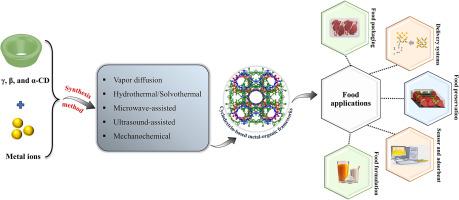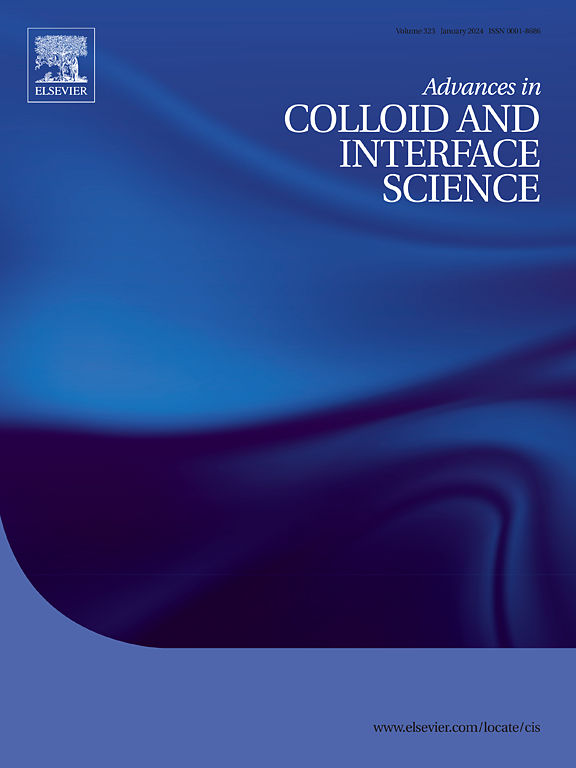基于环糊精的超分子金属有机骨架:先进的食品应用
IF 19.3
1区 化学
Q1 CHEMISTRY, PHYSICAL
引用次数: 0
摘要
基于环糊精的超分子金属有机骨架(CD-MOFs)在食品工业中有几种潜在的应用,包括包装材料、传感器组件、吸附剂和食品添加剂。这些多孔的生物相容性材料将环糊精的主客体化学与mof的可调结构相结合,使其性能能够适应食品工业中的特定应用。在活性和智能食品包装中,cd - mof有助于控制封装的抗菌剂和抗氧化剂的释放,从而提高食品质量、安全性和保质期。在cd - mof中包封生物活性化合物,如颜色、香料、营养药品和防腐剂,可以保护它们免受化学降解、微生物污染和挥发。在食品配方中,这些超分子复合物能够靶向递送功能性添加剂,从而改善感官属性和营养状况。许多cd - mof的可生物降解特性符合对环保材料的需求,从而减少了对合成添加剂的依赖。此外,cd - mof可以集成到智能传感器中,以检测变质或污染,确保实时质量监控。先前的研究表明,cd - mof可能为提高食品的保存、营养和可持续性提供创新的解决方案。然而,必须解决诸如可扩展性、成本和监管障碍等挑战,以释放其全部潜力。持续的研究和开发,加上跨学科合作,对于克服这些限制和将cd - mof整合到食品应用中至关重要。本文章由计算机程序翻译,如有差异,请以英文原文为准。

Supramolecular cyclodextrin-based metal-organic frameworks (MOFs): Advanced food applications
Supramolecular cyclodextrin-based metal-organic frameworks (CD-MOFs) have several potential applications in the food industry, including as packaging materials, sensor components, adsorbents, and food additives. These porous, biocompatible materials combine the host-guest chemistry of cyclodextrins with the tunable structure of MOFs, enabling their properties to be tailored for specific applications within the food industry. In active and smart food packaging, CD-MOFs facilitate controlled release of encapsulated antimicrobial agents and antioxidants, thereby enhancing food quality, safety, and shelf life. Encapsulation of bioactive compounds, such as colors, flavors, nutraceuticals, and preservatives, in CD-MOFs can protect them from chemical degradation, microbial contamination, and volatilization. In food formulation, these supramolecular complexes enable the targeted delivery of functional additives, thereby improving sensory attributes and nutritional profiles. The biodegradable nature of many CD-MOFs aligns with the demand for eco-friendly materials, thereby reducing reliance on synthetic additives. Furthermore, CD-MOFs can be integrated into smart sensors to detect spoilage or contamination, ensuring real-time quality monitoring. Previous research suggests that CD-MOFs may provide innovative solutions to enhance food preservation, nutrition, and sustainability. However, challenges such as scalability, cost, and regulatory hurdles must be addressed to unlock their full potential. Continued research and development, coupled with interdisciplinary collaboration, will be crucial in overcoming these limitations and integrating CD-MOFs into food applications.
求助全文
通过发布文献求助,成功后即可免费获取论文全文。
去求助
来源期刊
CiteScore
28.50
自引率
2.60%
发文量
175
审稿时长
31 days
期刊介绍:
"Advances in Colloid and Interface Science" is an international journal that focuses on experimental and theoretical developments in interfacial and colloidal phenomena. The journal covers a wide range of disciplines including biology, chemistry, physics, and technology.
The journal accepts review articles on any topic within the scope of colloid and interface science. These articles should provide an in-depth analysis of the subject matter, offering a critical review of the current state of the field. The author's informed opinion on the topic should also be included. The manuscript should compare and contrast ideas found in the reviewed literature and address the limitations of these ideas.
Typically, the articles published in this journal are written by recognized experts in the field.

 求助内容:
求助内容: 应助结果提醒方式:
应助结果提醒方式:


